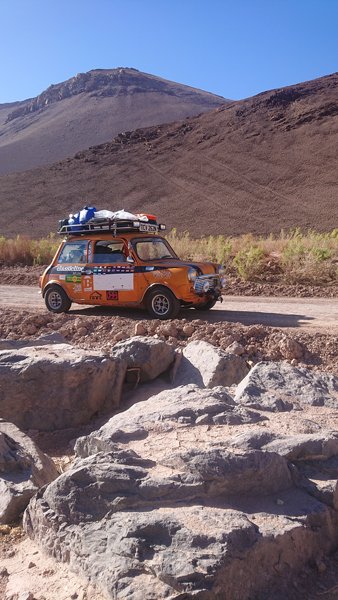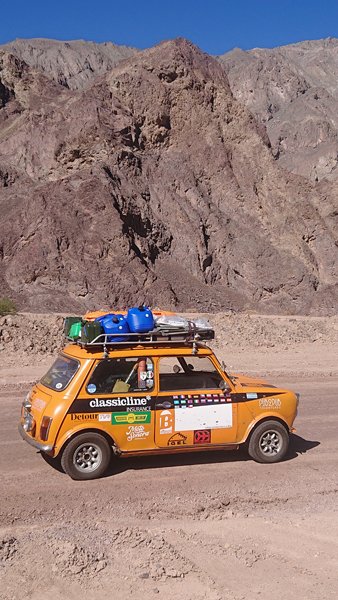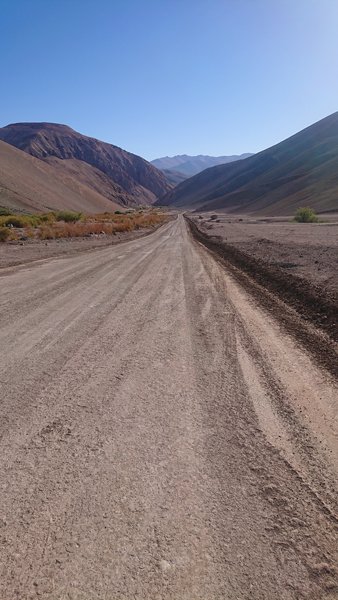Into the Atacama Desert: Mini 6000 Expedition Leg 2
The Mini 6000 Expedition is hotting up as Ben Coombs hits the road to the Atacama Desert.
If you’re the kind of road tripper who likes travelling east or west, Chile probably isn’t for you. Stretching for almost 2,700 miles from north to south, but often less than a hundred miles across, if you decide to chase the sunrise or sunset, your drive won’t last particularly long before you hit a border crossing, or the Pacific.
However, head north or south, and the possibilities for the enthusiastic road tripper are almost endless. And the beauty of such a variation in latitude is that the landscapes change by the day. Whereas in somewhere like Russia, you’ll drive for days and see only tundra, in Chile the landscape is always changing. From the rain-strafed fjords of the legendary Careterra Austral to the south, through the free-and-easy roads crossing the grasslands south of Santiago, to the winelands a bit further north, Chile is a country made for road trips; a country where every driving day brings a new and constantly changing backdrop.
We entered Chile roughly halfway up, and were soon heading north through rolling California-esque hills to the beach stop where our last update finished. And, true to form, as we drove, the landscape slowly morphed from one of dry greenness, to an altogether more desert-like experience. As Chile is so narrow, there is only one main road north, Ruta 5, and it’s smooth and generally dual-carriageway-ed tarmac made for easy progress, interspersed with only the occasional toll booth, or breakdown for the Range Rover.
In short, like much of our experience of Chile so far, progress was efficient and smooth, the Pacific sweeping in and out of sight to our left, and the hills bubbling up to form the Andes, to our right. But every so often, sweeping away from Ruta 5, an enticing tarmac or dirt track would lead into the desert, calling us to exchange efficiency for adventure. We resisted their call, however, for our adventure lay to the north, in the Atacama Desert.
From Santiago, near where we crossed into Chile, it’s over 500 miles to reach the town of Copiapo, a mining settlement which can lay some claim to being the gateway to the Atacama. But several hours before we got there, the landscape had already got the message. Bleached-dry sands stretched away from Ruta 5, rising up into rocky crags. Clouds ceased to be, and the heat built, sapping the moisture from the lands around us; lands which were amazingly, tantalisingly close to the Pacific ocean. The road speared across the landscape unflinchingly, as if the desert were something merely to be crossed, to be put behind in the search for the more welcoming landscapes far, far to the north.
But for us, the desert meant adventure. We planned to spend weeks there, exploring, experiencing, slowly climbing higher.
Copiapo was a pitstop for us. We needed to stock up on everything we’d need to survive in the world’s driest desert for as long as possible. And this is no exaggeration – the sign on the way out of town warns travellers that the next fuel is 436km away. The Atacama is no place for the unprepared. And so, we set to work buying food, water, batteries and fuel. Coffee and engine oil and coca cola and toilet roll. Trolley after trolley was filled, the Range Rover loaded to the roof, the Mini doing its bit too.
And then, after a full day of preparation, we were ready to begin the adventure in earnest. We climbed aboard our Mini and Range Rover, and set off from Copiapo into the desert, our evening destination being our first wild camp, 3,100 metres up amid the Atacama’s golden sands, and beneath its famously starlit night skies.
Prospects don’t get much more tantalising than that.
Words & Photography Ben Coombs Twitter/X | Instagram















The Mini 6000 Expedition ends with a lengthy drive back to the Atlantic coast.